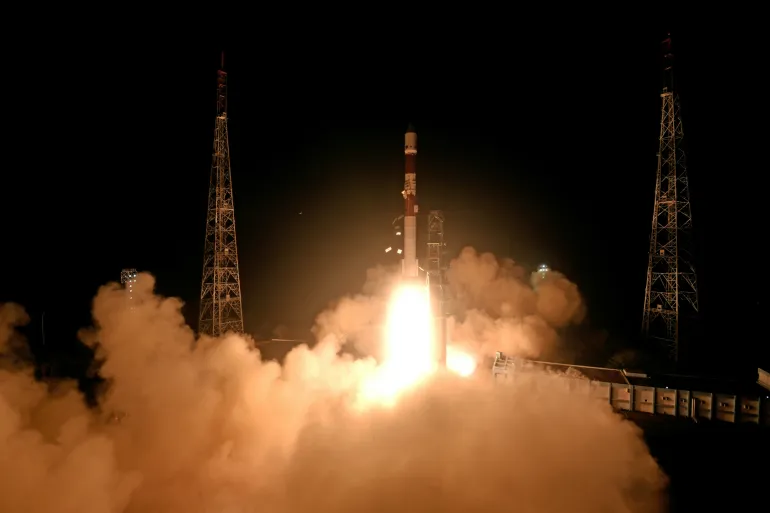India’s ambitious space programme suffered a significant blow on Sunday, May 18, 2025, after the Indian Space Research Organisation (ISRO) failed to successfully launch its latest Earth observation satellite. The failed mission marks a rare setback for the agency, which has built a reputation in recent years for cost-effective and reliable space operations.
The GSLV-F14 (Geosynchronous Satellite Launch Vehicle), carrying the EOS-07 satellite, lifted off from the Satish Dhawan Space Centre in Sriharikota but experienced an anomaly during the second stage of flight. ISRO officials confirmed shortly after liftoff that the mission had failed to reach the intended orbit.
“The vehicle performance was normal up to the second stage, but the cryogenic upper stage did not ignite as expected,” said ISRO Chairman S. Somanath in a press briefing. “We are analysing the data to determine the exact cause of the failure.”
The satellite, EOS-07, was designed to capture high-resolution images for environmental monitoring, agricultural planning, urban development, and disaster management. It was expected to strengthen India’s growing network of Earth observation tools, which provide critical data for civilian and strategic applications.
This mission was also closely watched as a technological stepping stone for more ambitious future projects, including the Gaganyaan human spaceflight mission and new interplanetary explorations. The failure has cast a temporary shadow on ISRO’s momentum, though officials have reassured the public that setbacks are part of the iterative process of space science.
“We must accept failures as part of complex missions,” said former ISRO scientist Dr. Mylswamy Annadurai. “It is important to identify the problem quickly and correct it for future launches. ISRO has always bounced back stronger.”
The Indian public and media have followed ISRO’s journey closely, especially since its historic Chandrayaan-3 lunar landing in 2023, which made India the first country to land a spacecraft near the Moon’s south pole. That triumph was seen globally as a symbol of India’s rising stature in space exploration and technological self-reliance.
Despite today’s disappointment, ISRO maintains an impressive record, with over a dozen successful launches in the past two years, including deep space missions, small satellite launches for foreign clients, and the expansion of the NavIC navigation system—India’s answer to GPS.
The failed launch may have financial implications, particularly for ISRO’s commercial arm, NewSpace India Limited (NSIL), which has been marketing India’s satellite and launch capabilities to global customers. However, no commercial payloads were aboard this particular mission.
India’s Ministry of Science and Technology has expressed confidence in the space agency, stating that ISRO will review the incident comprehensively and ensure the next launch proceeds as scheduled. The upcoming missions include a Venus orbiter project, a reusable launch vehicle prototype, and a test flight of the Gaganyaan crew module.
International space agencies, including NASA and the European Space Agency, sent messages of solidarity, emphasizing that such failures are common in the high-risk domain of spaceflight. “Every successful launch is built on lessons from failed ones,” said ESA Director General Josef Aschbacher in a tweet.
While the latest setback is a reminder of the complexities involved in space exploration, ISRO’s resilience and commitment to innovation are expected to keep India’s programme on track. The next steps will be critical in maintaining confidence at home and abroad, and ISRO’s engineers are already at work diagnosing the issue and preparing for a return to flight.
Source; Al Jazeera



